There’s something about a ridiculously huge things that makes people giggle. The first time I fired a .50 BMG rifle I couldn’t stop giggling for a good half hour. .338 Lapua magnum is another one of those huge calibers that long range shooters love to use and the noise it puts out is remarkable, almost giggle worthy in its own right. In order to tone down the harsh noise of “large bore” rifle rounds, Advanced Armament Corp. designed the Titan SS. And then they made the mistake of letting me try it out.
As a preface, I just wanted to emphasize that this is not a “full” review of this product. Here at TTAG we usually reserve judgment until we’ve put a couple hundred rounds through something and tried it out in different conditions. Unfortunately the BATFE here in the U.S. prevents us from getting our hands on silencers for protracted testing unless we go through months of waiting, spend $200 per transfer, and live in certain states. It’s impractical. Luckily I recently had a chance to visit the Advanced Armament Corp. factory and test all of their cans under their supervision. While the tests may not have been as complete as I want, they were good enough for a brief review.
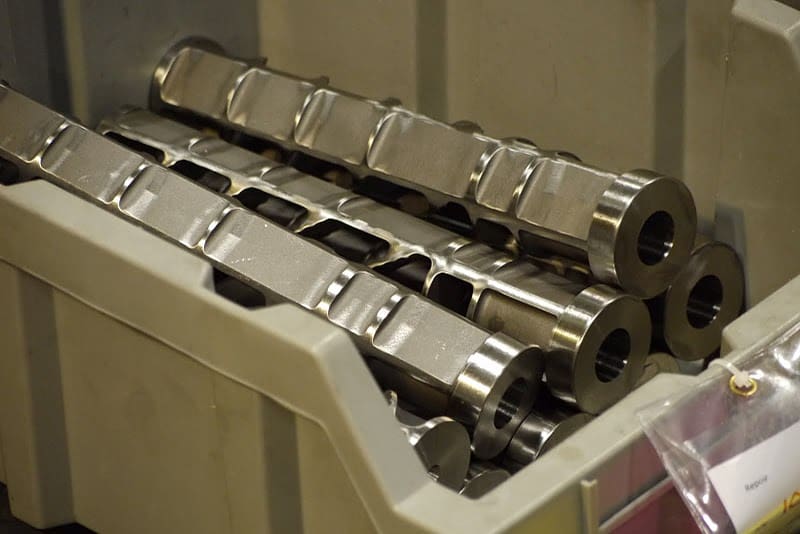
The Titan SS is constructed in a way that is almost completely different from anything else AAC does. In most of their silencers, AAC uses a number of smaller baffles and welds them together to form the body of the silencer. With the Titan SS, however, the structure of the silencer’s baffles is one solid block of stainless steel, milled to fit the shape and create the baffles needed.
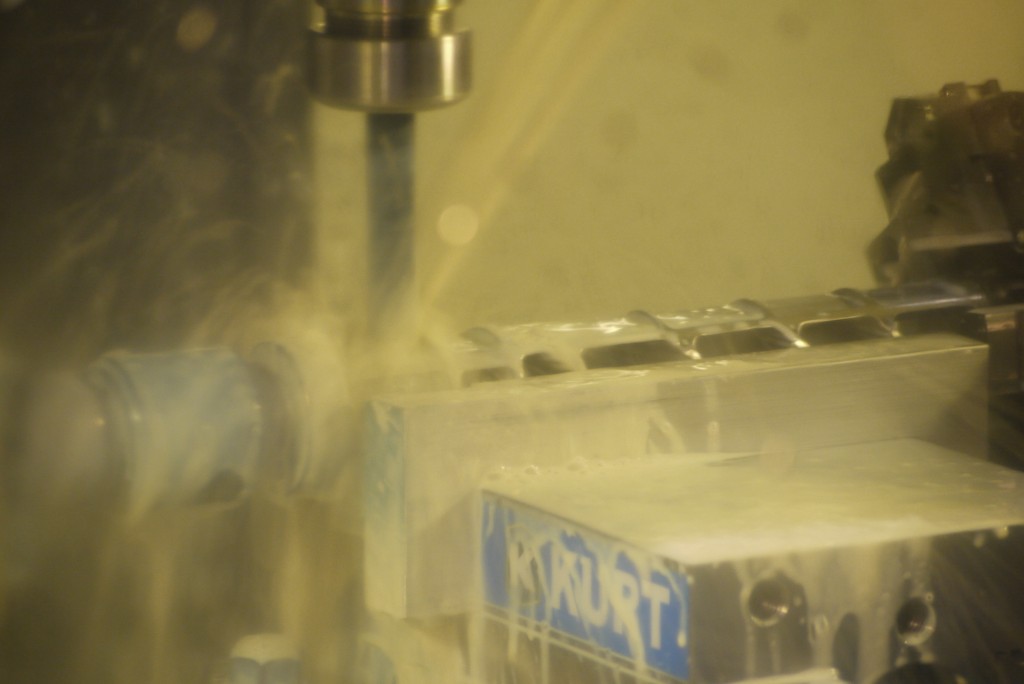 The milling process is performed by a milling machine in the R&D section of their workshop, and each silencer is attended throughout the entire process by a human operator. It’s a rather tedious and time consuming process, which helps explain the $1k+ price tag.
The milling process is performed by a milling machine in the R&D section of their workshop, and each silencer is attended throughout the entire process by a human operator. It’s a rather tedious and time consuming process, which helps explain the $1k+ price tag.
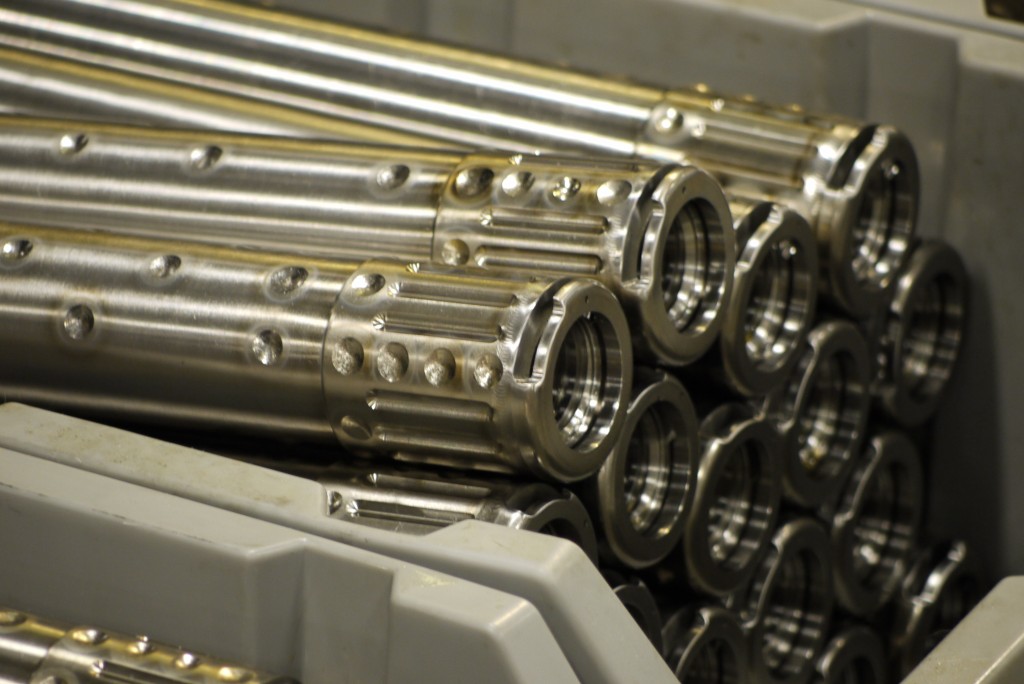 Once the milling is complete, each silencer is welded into its housing. This is another difference between the design of the Titan and the rest of AAC’s centerfire rifle lineup — the outer housing actually does play a role in containing the expanding gasses. With silencers like the M4-2000 and 762SDN6, the baffles form a self contained unit and the outer shell is more for aesthetic and ATF required marking purposes than an integral part of the can.
Once the milling is complete, each silencer is welded into its housing. This is another difference between the design of the Titan and the rest of AAC’s centerfire rifle lineup — the outer housing actually does play a role in containing the expanding gasses. With silencers like the M4-2000 and 762SDN6, the baffles form a self contained unit and the outer shell is more for aesthetic and ATF required marking purposes than an integral part of the can.
While the Titan can suppress the sound of larger rounds including the .338 Lapua Magnum, the round where it’s really taken off in popularity is .300 Winchester Magnum. The reason for this spike in popularity (and subsequent massive demand) is that the Titan QD, which is more or less a Titan SS with a QD mount, was chosen to be a part of the Army’s XM2010 Enhanced Sniper Rifle, which is replacing the older M24 rifles in .308 Winchester. The XM2010 pictured above was at NDIA, where yours truly got a chance to touch off a couple rounds. And I admit, I was downright impressed. These rifles have begun being issued to troops in combat, and have been used in Afghanistan as early as March of 2011.
The Army likes it. The public seems to like it. But how well does it actually work?
There’s two main concerns when the Army (or even a civilian) is choosing a silencer for a large bore firearm: dust and noise.
When I was firing the Armalite AR-50 a few months back, the most annoying part of the firing process wasn’t the noise the gun made. The noise was actually tolerable when behind the gun. The most annoying part of firing the gun was the blast of air that the muzzle created. All kinds of things were getting picked up and thrown into the faces of the people next to me, people who quickly moved a couple firing points down the line. For the armed forces this concern is even greater because that dust cloud created by the gun makes the shooter a prime target for mortar rounds and counter sniper fire.
A secondary concern is the noise. There’s no way that this thing is ever going to be hearing safe, and a subsonic .338 Lapua Magnum kina defeats the purpose of the heavier gun. But with the silencer attached, John Hollister (the man who dragged all this equipment out for me to play with) was able to stand to the side of me firing and was comfortable without earplugs. Then again, John is 80% deaf in his left ear so take that with a grain of salt.
The best way to illustrate AAC’s superior construction and quality is to compare it to another product. Like the silencer Barrett had on their MRAD .338 LM that they had at NDIA.
Barrett’s silencer is a lot more “squishy” than AAC’s. And while it doesn’t come across well in the videos, AAC’s can in fact sounds a lot quieter than Barrett’s silencer did. I’m not sure who made that silencer, but AAC says it wasn’t them.
The Titan SS is a Large Bore Rifle silencer produced by Advanced Armament Corp. that suppresses not only the sound of the shot, but the visual effects of the shot as well. I’m convinced that it’s the best (lack of) bang for your buck, and so is the U.S. Army. Then again, this is the same U.S. Army that issued M-16 rifles to troops in Vietnam without cleaning kits, so that might not be the best endorsement. If you have a .338 LM rifle, chances are you can afford taking the time and expense to put a muzzle on that dog. And I’m sure your fellow shooters would appreciate the gesture as well.
Titan SS Large Bore (.338 LM) Rifle Silencer
Length: 10″
Weight: 38 oz
Diameter: 1.85″
Sound Reduction: 34 dB
MSRP: $1195
Ratings (out of 5):
Sound Suppression: * * * *
The round is still going supersonic, so it’s not going to be completely silent. But it’s as close as you’re going to get with such a large caliber.
Build Quality: * * * * *
I mean, just LOOK at that solid block of material! I bet you could run a truck over this thing and it would still work without an issue.
Ease of Use: * * * * *
There’s nothing to take apart, nothing to clean, and nothing to lube. It’s easy as pie to maintain.
Overall Rating: * * * * *
The best large bore rifle silencer I’ve ever fired, Barrett included.
(Pictures courtesy Advanced Armament Co.)

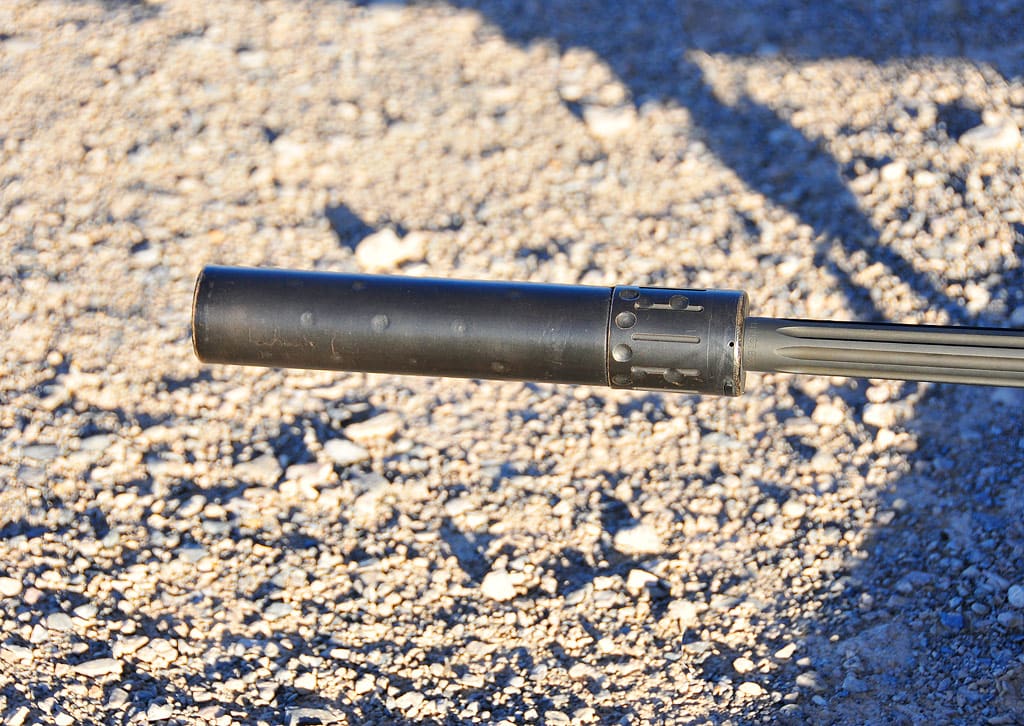
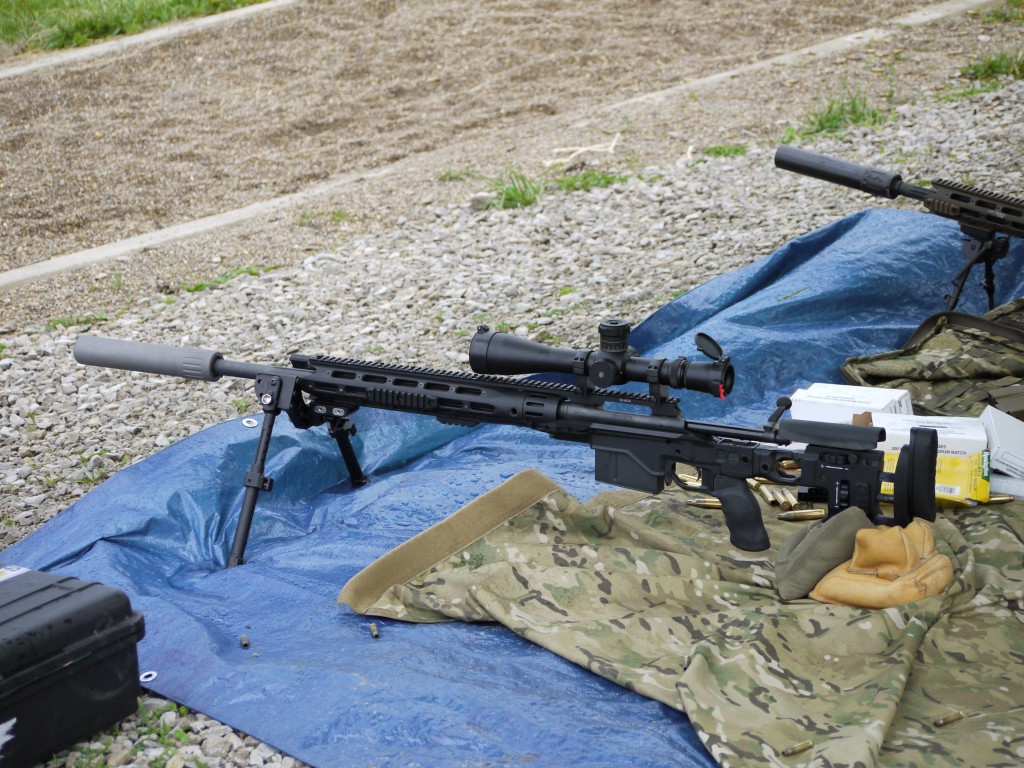



Again with the judging the silencer by the physics of supersonic bullets. There is absolutely nothing a silencer could possibly do about this. Even hinting otherwise is pure magical thinking. Which calls into question the rest of the review. Once you know that a reviewer holds an essentially fantastical, magical view of the universe, how can you trust him to judge physical phenomenon determined by natural laws?
You can’t.
Again with the “the stars are relative to overall noise reduction compared to all other silencers and don’t factor into the overall rating.”
A near perfect review for the product and the first comment is still a complaint?
I for one enjoyed your review and wish I had the money and lived in a silencer friendly state where I could afford one of these and the gun.
Here’s a thought to the people who get angry at the ratings, ignore the stars and just read the review.
This may come as a shock, but I’m not an AAC fanboy. I don’t care what rating he gives their product. Honestly, so far I’ve chosen to purchase their competitors’ products instead. But that could change. If I had clear, informative reviews that didn’t raise irrelevancies and contradict themselves.
That’s not what you said. You said, and I quote, “it’s not going to be completely silent. But it’s as close as you’re going to get with such a large caliber.” But now you seem to be saying that you compared it to other silencers and it came up lacking in this respect.
So which is it? Because you can’t have it both ways.
Either it’s as good as it gets, or it’s not. If it is, it deserves 5 stars. If it’s not, then your readers deserve to know what benchmark you’re using, and to know what product, in your experience, does deserve 5 stars. This is useful information, the kind of information a good reviewer provides for his or her readers. Information you could have provided in less time than it took to mention the completely irrelevant fact that supersonic bullets make a sonic boom.
Like this: “Feature X: **** – While product A was very good in this regard, it was not quite up to standards set by product B.” No time wasted on irrelevancies, and now your readers have a clear reason why the reviewed item did not receive full marks, and the name of another competing product to research if they are in the market. Which also happens to provide you with an opportunity to write another review, bringing in more viewers. See how that works?
Everybody wins.
To Jason…….
1. Nick pointed out that supersonic crack cannot and will not go away.
2. He did actually mention the Barrett as your “product B” protocol requires and compared the two.
You seem to be very insensitive for no reason and it’s posters like YOU who push other folks away. The author pointed out time and again this was a basic non official testing of a product that he was only able to gain limited access to. If you want to parade around like the “proper review” police, then do it after reading a proper review and leave these opinion style review pages to the rest of us common sense minded folks!
I for one have taken this and many other reviews and tests for this particular suppressor and have found that it DOES happen to be at or very near the best for calibers it was designed for.
“some people have something to say, some people have to say something”
You did catch where he said the rounds are supersonic and no silencer can affect the noice produced by that. I thought perhaps you missed it since you comment indicates you did.
If I was to get one of these for my .338 LM (and am surely tempted) it would be to reduce the blast on myself & adjacent shooters. If by some misfortune of political malfeasance we find ourselves in a situation where I have to use the weapon for its military/militia purpose, damping the directional sound of the muzzle blast will help a great deal shooting at a distant target because even though they’ll hear the sonic crack THAT sound is difficult to backtrace to the source.
On a rifle of this type, a suppressor is all about reducing, and not eliminating, the noise signature and dust thrown up by the muzzle blast. If the suppressor (silencer, whatever you call it) conceals the operators’ firing position and helps them not get killed, it’s a success. The fact that it keeps them from going deaf quite as quickly is, in military calculus, just a bonus.
Regards for this marvellous post, I am glad I found this web site on yahoo.
I am looking at this 338LM suppressor for use with a 340 Weatherby; anything that reduces the noise and recoil of the Weatherby would be a huge benefit! I would love to see how this suppressor compares to the 338 can that Sig is making… There seems to be right much difference in the price tags, but perhaps the difference is justified. I simply cannot find a comparison of the two units. Thanks!